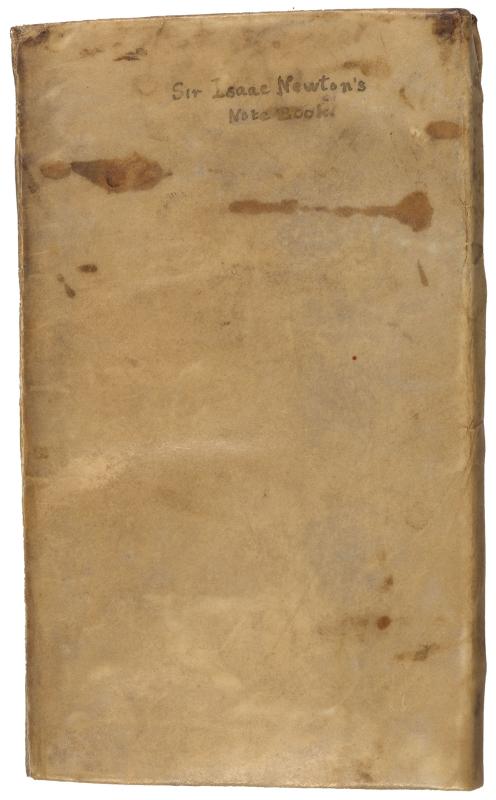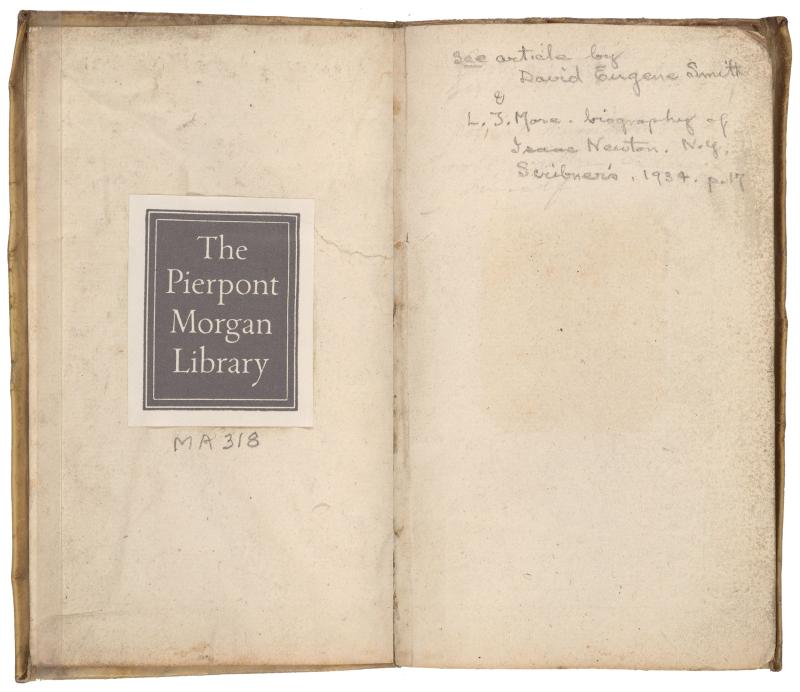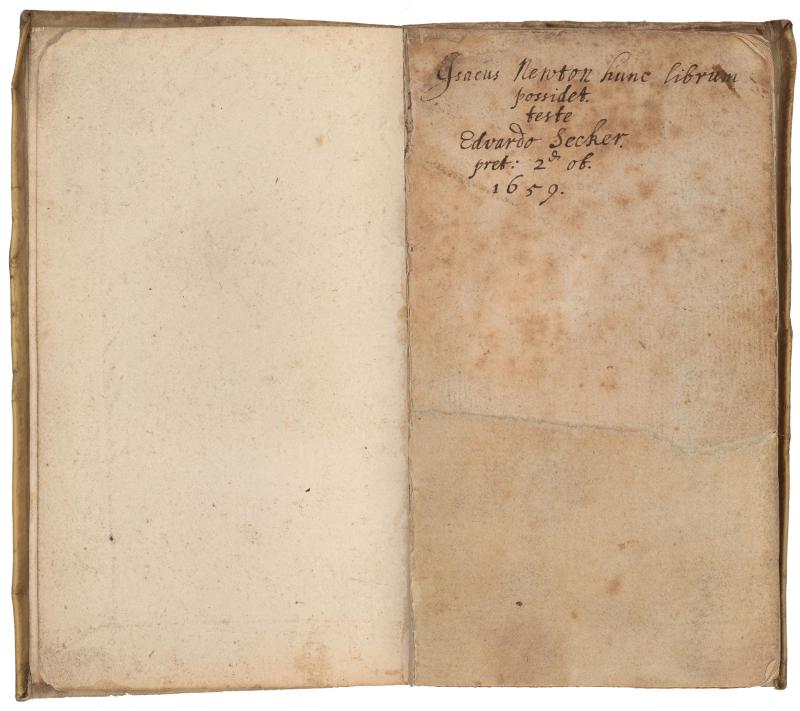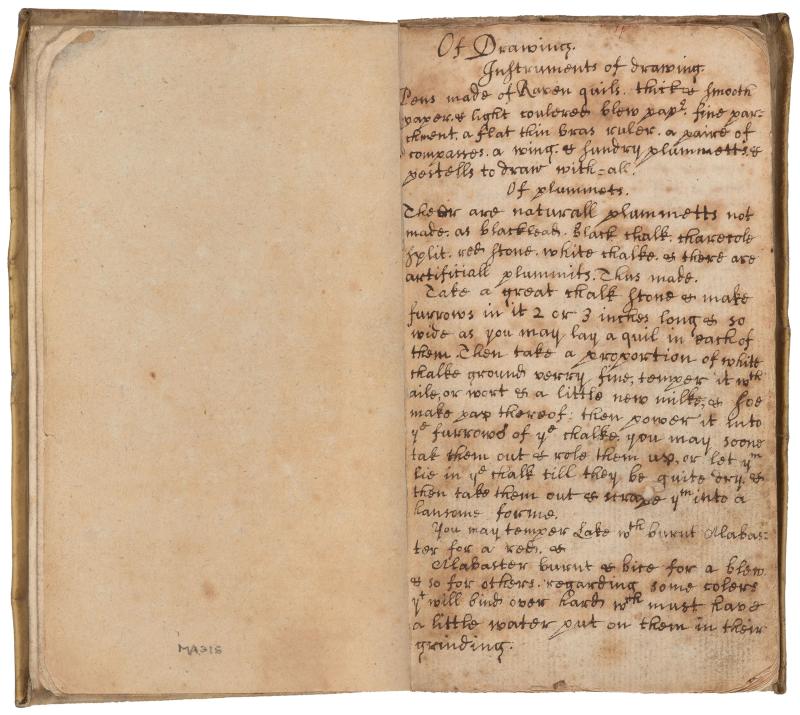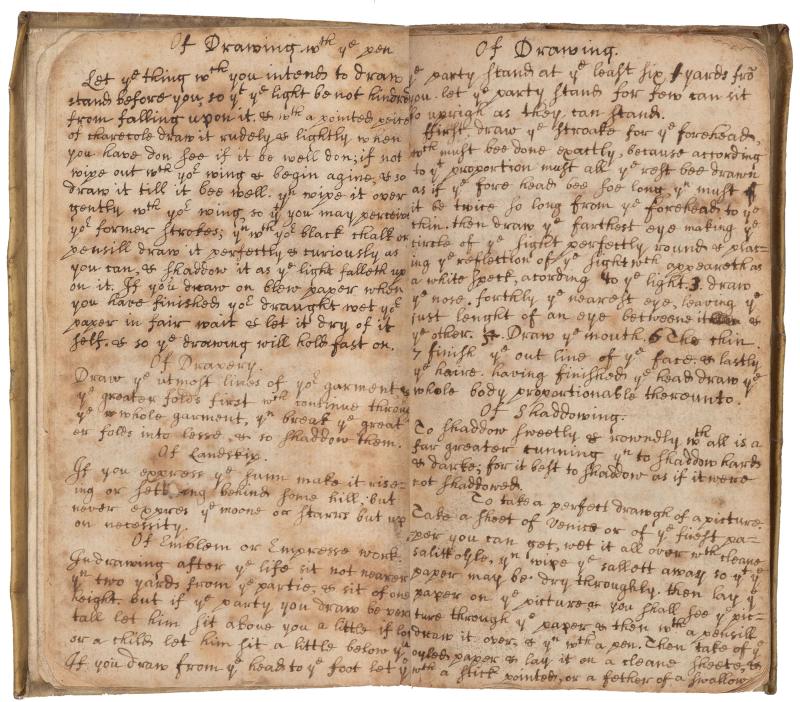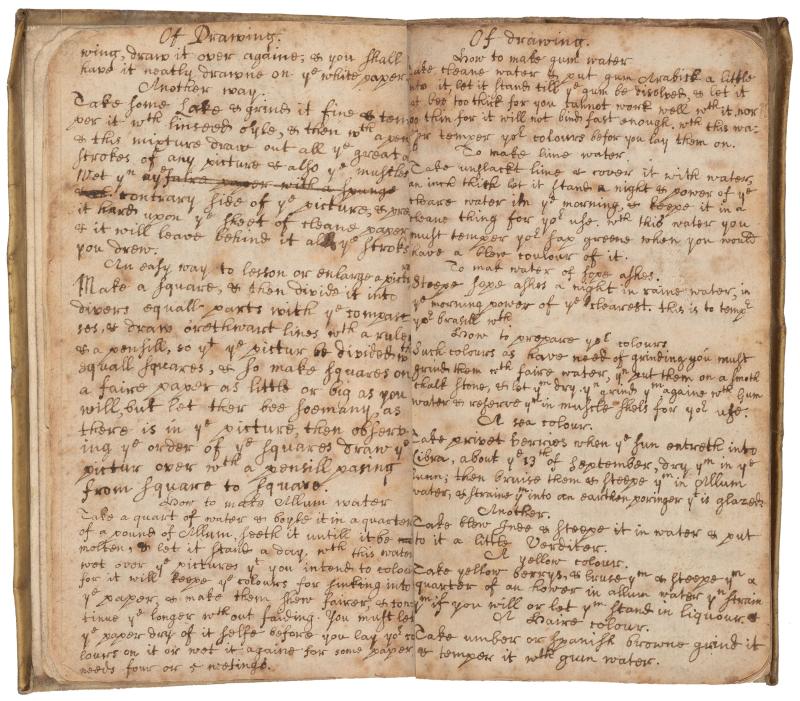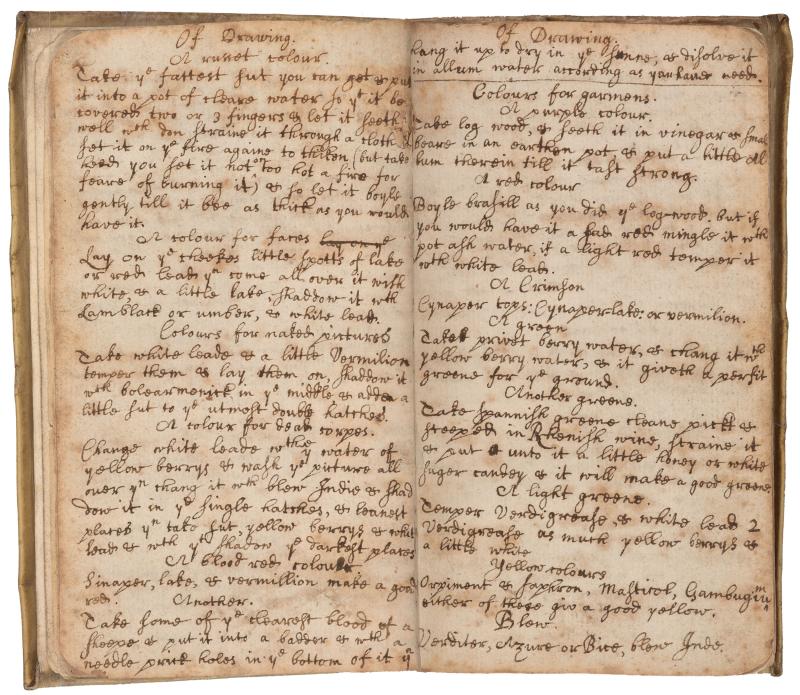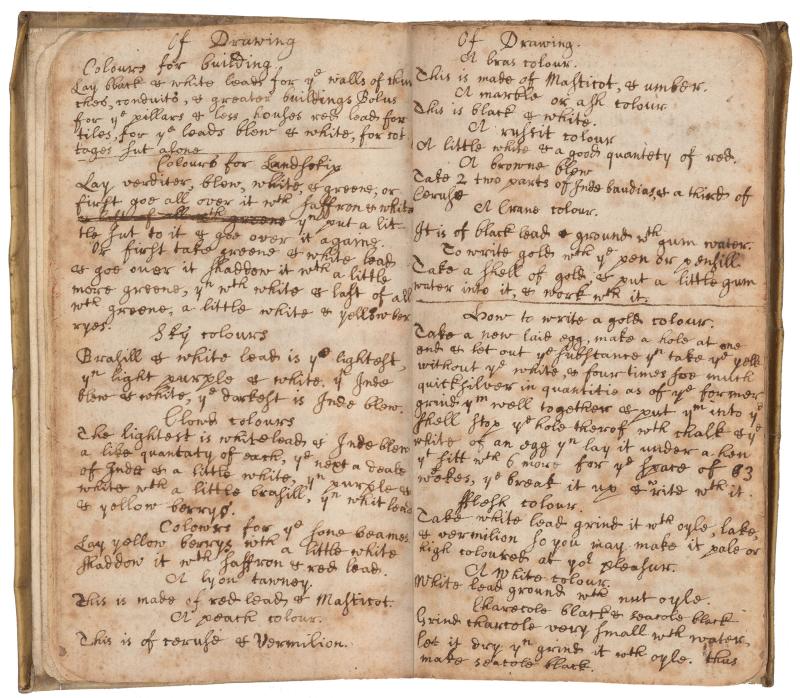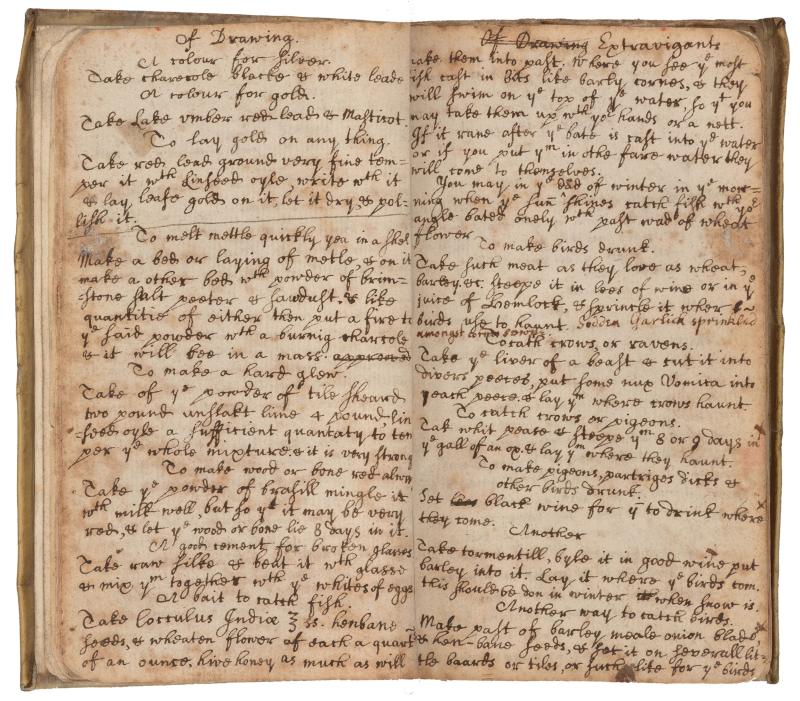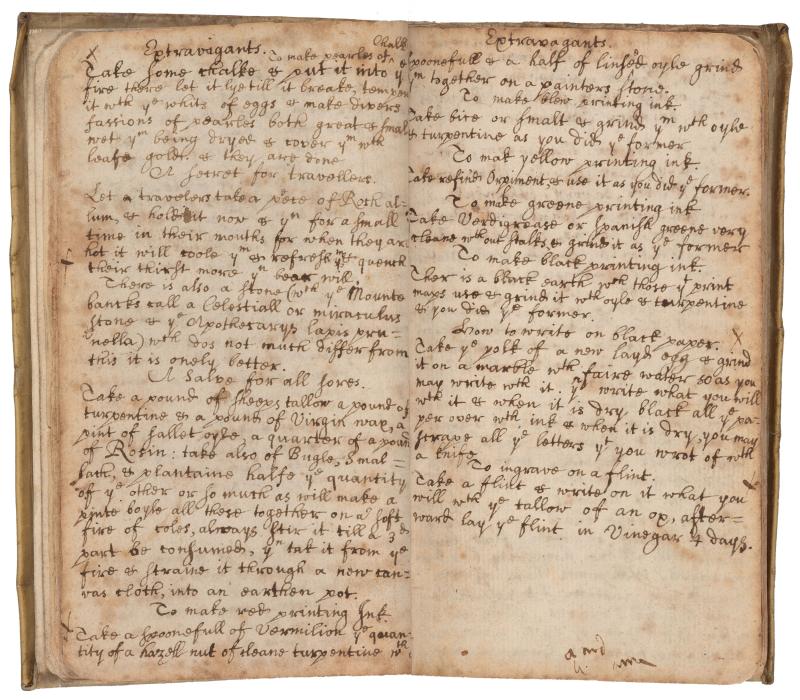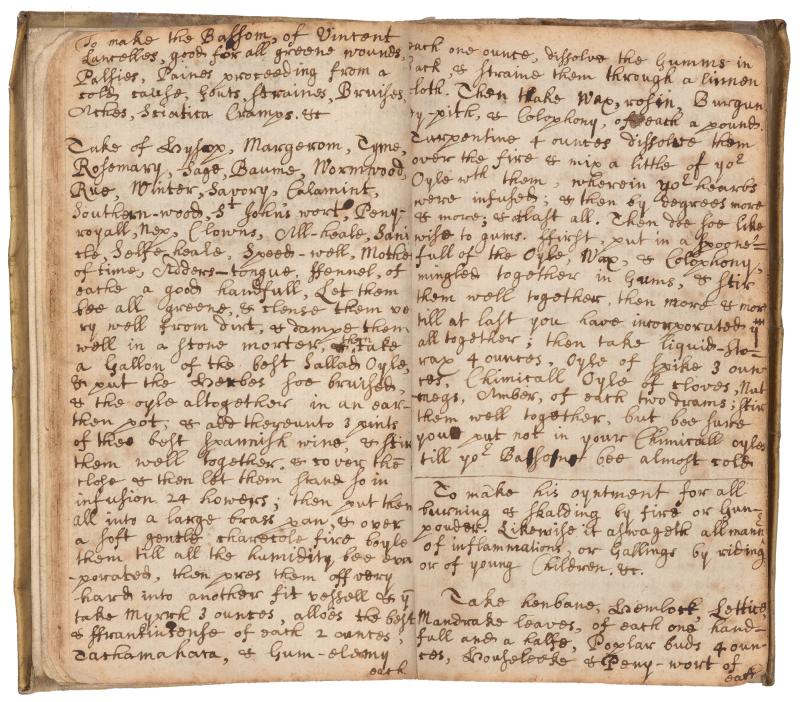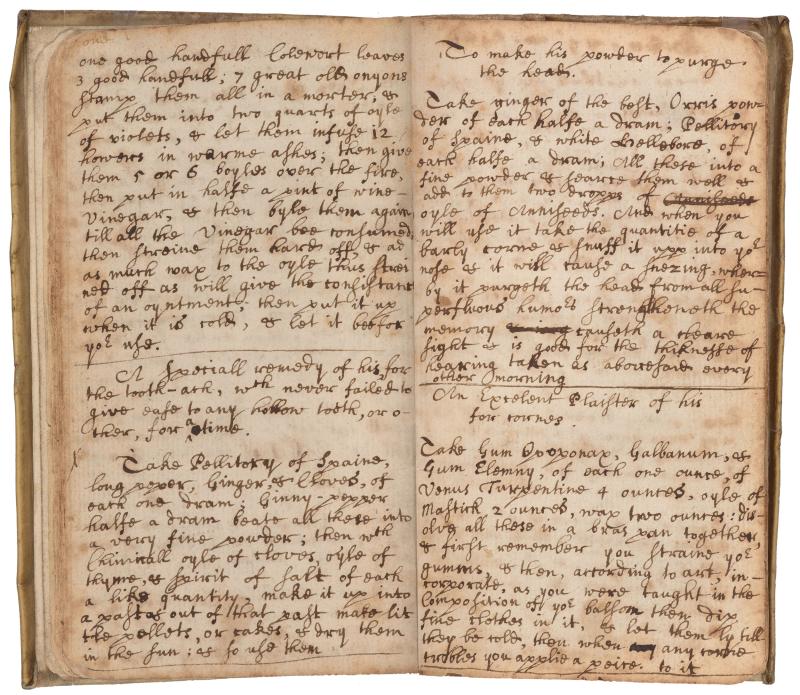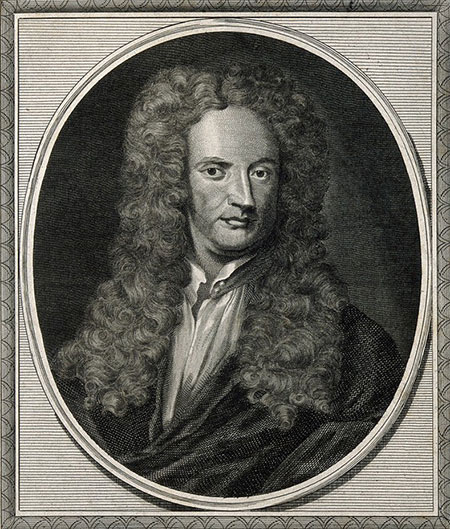
Long before becoming one of the most celebrated figures in the history of science, Sir Isaac Newton (1642–1727) kept this pocket-sized memorandum book, filling it with notes distilled from his reading. The small (12.5 cm x 7.8 cm), vellum-bound manuscript bears some of Newton’s earliest writing, dating to the end of his grammar school days and start of his university career at Trinity College, Cambridge. Comprising a diverse range of recipes (for inks, paints, medicines, and chemical compounds), astronomical tables, mathematical problems, and linguistic observations, the memorandum book offers fascinating insight into Newton’s education and reading practices from 1659 to the early 1660s, when he was in his late teens and early twenties.
Written in Newton’s hand on fol. 1r is an inscription reading, Isacus Newton hunc librum possidet teste Edvardo Secker pret: 2d ob 1659 (“Isaac Newton possesses this book, witnessed by Edward Secker. Price 2d ob 1659”). The price presumably refers to the cost of the blank bound notebook: 2 pence, 1 halfpenny (“ob” is a historical term for a halfpenny). The identity of Edward Secker remains a mystery, though in 1659 Newton had been called back by his mother, much to his disappointment, to the family farm in Woolsthorpe. The following year he would return to the free grammar school at Grantham, where he had been a pupil since 1655.
As was customary with such notebooks in the seventeenth century, much of the volume’s content did not originate with Newton but derived instead from his reading, particularly John Bate’s The Mysteries of Nature and Art (he seems to have used the second edition of 1635) and Francis Gregory’s Nomenclatura brevis anglo-Latinis (1654). From Bate Newton selectively excerpted and paraphrased instructions and recipes related to drawing and painting (fols. 2r–6v), including “a colour for faces,” “colours for naked pictures,” “a colour for dead corpes [sic],” and “colowers [sic] for ye sone [sun] beames.” It appears Newton took some of his medicinal recipes (fols. 8v–11r)—attributed to the Italian physician Vincent Lancelles—from an unidentified print or manuscript source. In a separate section on “Extravigants” (a term Bate uses to categorize miscellaneous experiments), Newton copied recipes “to make wood or bone red always” and “to make birds drunk” (fols. 6v–7r). He also listed “Certaine tricks” (fols. 11r–12r), such as methods to “turne waters into wine”—in fact, the recipes describe how to turn water into several types of alcoholic beverages (claret, sack, blue claret, “posset drink,” and “strong waters”).
Other portions of the notebook engage more closely with scientific and mathematic principles. Newton compiled tables of information related to solar and lunar cycles as well as an astronomical calendar running from 1662–1689 (fols. 12v–14v); scholars have used the date of 1662 to situate these notes firmly within Newton’s first few years at Cambridge University, where he began his studies in June 1661. While these notes (as well as the recipes and experiments recorded earlier in the book) are written in a distinctively early form of Newton’s handwriting, subsequent sections bear the characteristics of Newton’s later style of penmanship, cultivated in the first five years of the 1660s. These sections (fols. 15v–27r) include notes on the “Systema mundanum secundum Copernicum” (“System of the World according to Copernicus”); experiments regarding perpetual motion and “a perpetuall lamp”; instructions for making sun dials; additional medicinal and culinary recipes; mathematical solutions for triangles; and notes “Of questions in Navigation.” At one point, still writing in his earlier hand, Newton turned the manuscript book upside down and began to take notes from the other end of the volume. This section (fols. 38v to the end) features extensive word lists modified from Gregory’s Nomenclatura brevis anglo-Latinis (1654), organized into categories such as beasts, diseases, elements, husbandry, arts, kindred, minerals, “meate & drinke,” and “man, his affections, & sences.” A final section (fols. 34v–38r), written in Newton’s later hand, relates to phonetics and linguistics.
J. Pierpont Morgan purchased the Newton memorandum book in 1907 from the London book dealer J. Pearson & Co. It was known by the politician John Conduitt (1688–1737), who married Newton’s niece Catherine Barton (d. 1739). Conduitt remembered the notebook but could not find it among the Newton family papers in the early eighteenth century. The text of the memorandum book has been transcribed and published online by The Newton Project (Oxford University).
Introduction by Philip S. Palmer, Robert H. Taylor Curator and Department Head, department of Literary and Historical Manuscripts, 2019.

